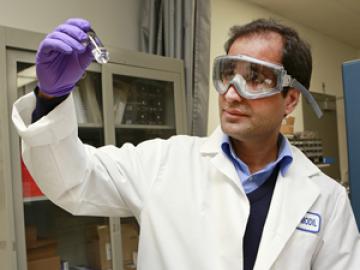Filter News
Area of Research
- (-) Energy Sciences (3)
- (-) Quantum Condensed Matter (2)
- Advanced Manufacturing (3)
- Biological Systems (8)
- Biology and Soft Matter (1)
- Building Technologies (2)
- Chemical and Engineering Materials (2)
- Chemistry and Physics at Interfaces (6)
- Clean Energy (53)
- Climate and Environmental Systems (1)
- Computational Biology (2)
- Computational Chemistry (1)
- Computer Science (1)
- Energy Frontier Research Centers (7)
- Functional Materials for Energy (6)
- Fusion Energy (1)
- Geographic Information Science and Technology (2)
- Isotope Development and Production (1)
- Materials (46)
- Materials Synthesis from Atoms to Systems (5)
- Materials Under Extremes (6)
- Neutron Data Analysis and Visualization (2)
- Neutron Science (12)
- Nuclear Science and Technology (6)
- Reactor Technology (1)
- Supercomputing (30)
- Transportation Systems (4)
Media Contacts

Advances in ultrathin films have made solar panels and semiconductor devices more efficient and less costly, and researchers at the Department of Energy’s Oak Ridge National Laboratory say they’ve found a way to manufacture the films more easily, too.
Typically the films—used b...

Groundbreaking work at two Department of Energy national laboratories has confirmed plutonium’s magnetism, which scientists have long theorized but have never been able to experimentally observe. The advances that enabled the discovery hold great pro...

Robert Wagner of the Department of Energy's Oak Ridge National Laboratory has been chosen to receive the 2014 International Leadership Citation from the Society of Automotive Engineers.

By controlling the temperature of silica rods as they grow, researchers at the Department of Energy’s Oak Ridge National Laboratory could be setting the stage for advances in anti-reflective solar cells, computer monitors, TV screens, eye glasses and more.

Bruce Pint, a research staff member at the Department of Energy's Oak Ridge National Laboratory, has been elected a 2014 National Association of Corrosion Engineers fellow.




